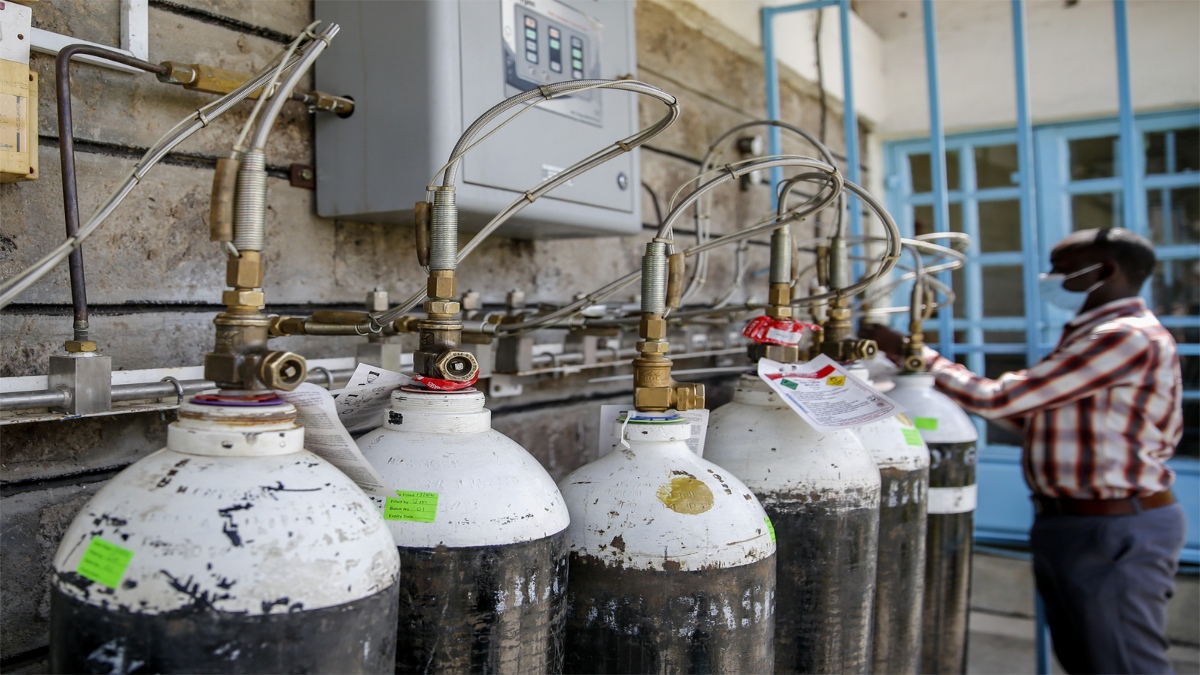The Brihanmumbai Municipal Corporation (BMC) plans to set up 16 oxygen generation plants in 12 Mumbai hospitals to ensure the city becomes partially self-reliant in its oxygen needs. The new plants will add 43 MT to the daily oxygen production in the city. Mumbai currently requires 235 MT of medical oxygen daily. The city reported 5,867 new cases and 71 deaths. The state, meanwhile, reported 67,160 fresh cases and over 600 deaths. In all, the toll in the state stands at 63,928. Maharashtra now has 6.94 lakh active cases.
Officials said as soon as tenders are published for the plants, they expect installation to be completed within a month. “The shelf life of these plants will be 15 to 30 years. This will reduce dependence on external supplies,” a civic official said.
The new plants will work on Pressure Swing Adsorption (PSA) technique that takes in ambient air, subjects it to varying pressure and separates and ejects nitrogen back into the atmosphere.
The remaining oxygen is compressed and filtered and fed into the medical oxygen pipeline. This oxygen is 92-95% pure.
Mumbai currently has 78,226 active cases with 10,048 patients on oxygen support. With 7,000 to 8,000 fresh cases daily, the requirement for oxygen beds and oxygen supply is rising. Several private nursing homes and smaller hospitals have been facing a supply delay. Earlier this month, 168 patients had to be shifted from six BMC hospitals after their oxygen supply ran out.
Civic officials said they now require an alternative to liquid medical oxygen (LMO) dependence. LMO delivery can take days to reach hospitals from manufacturers, as demand rises and manpower to transport oxygen becomes scarce. The civic body has asked hospitals to maintain oxygen reserves so that in case there is a delay in supply, hospitals can dip into the reserves.
Officials said the new plants, with a budget allocation of Rs 90 crore, will cost less in the long run and reduce regular expenditure on jumbo and dura cylinders. BMC had set up a 500 cubic m plant in Kasturba hospital two years ago. A year ago, another 1,740 cubic m plant was set at Jogeshwari’s Hinduhriday Samrat Balasaheb Thackeray Trauma hospital.
Civic officials said both plants have made the hospitals independent of external oxygen support. Cabinet Minister Eknath Shinde said, “Within a month this plant will be activated in Kalyan, Dombivali, Bhiwandi, Ulhasnagar,Vasai, Virar, and at Panvel. One plant will produce two tonnes of oxygen which is enough for 200 oxygen beds. Even in Gadhchiroli will built an oxygen plant.”
Meanwhile, the first Oxygen Express carrying Liquid Medical Oxygen tankers from Visakhapatnam reached Nashik in Maharashtra. The train reached Nasik road station at 10.25 am, where four tankers were unloaded, the Central Railway (CR) said in a statement. Tweeting about it, Minister of Railways Piyush Goyal said, “‘Oxygen Express’ train loaded with liquid medical oxygen tankers from Vizag has reached Nashik. Four oxygen tankers have been unloaded to provide additional oxygen to the patients.”
Of the seven tankers filled with liquid medical oxygen, three were unloaded in Nagpur after the train arrived there at 8.10 pm on Friday. After its departure from there, the train reached Nashik in 12 hours, the CR said.
The train was carrying 100 tonnes of medical liquid oxygen from Rashtriya Ispat Nigam Ltd in Vishakhapatnam, from where it had begun its journey on 22 April. “Railways took the movement of Oxygen Express as a challenge and successfully ran the first Oxygen Express from Kalamboli in Navi Mumbai to Visakhapatnam and back up to Nashik,” it said. The moment Railways got the request for it, ramps were constructed at various places immediately for the movement of liquid medical oxygen tankers. The ramp at Kalamboli was built in only 24 hours, the statement said.
For the movement of Ro-Ro service, the Railways had to map the entire route considering the various constraints like ghat (hilly) sections, Road Over Bridges (ROBs), tunnels, curves, platform canopies, overhead equipment at certain locations. As oxygen is a cryogenic and hazardous chemical, Railways has to avoid sudden acceleration, deceleration, have to check pressures in between, especially when it is in the loaded condition.























